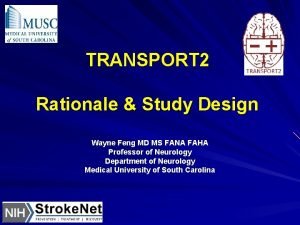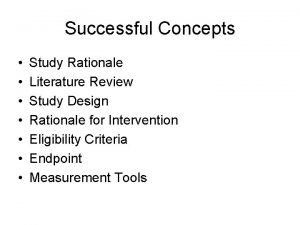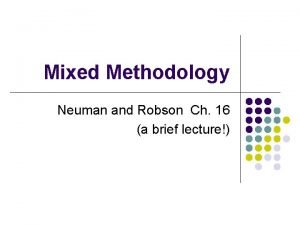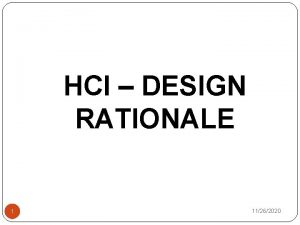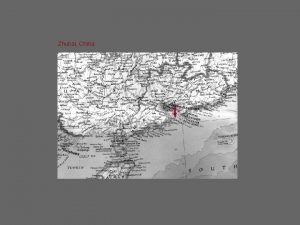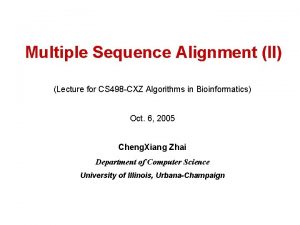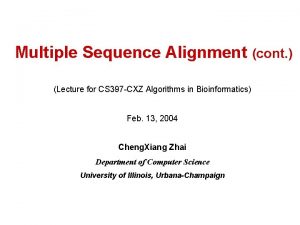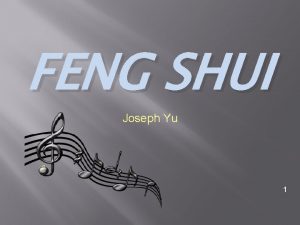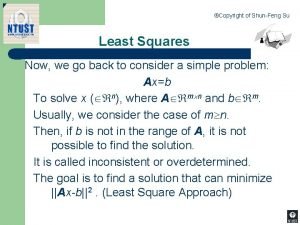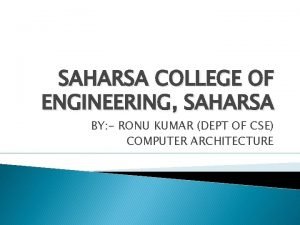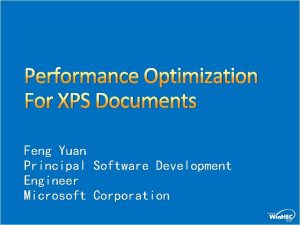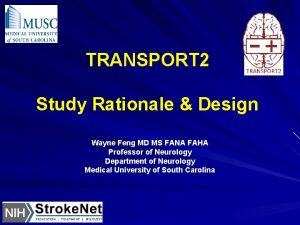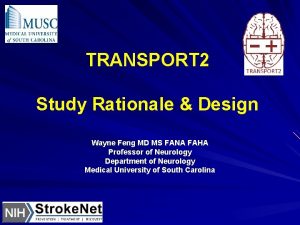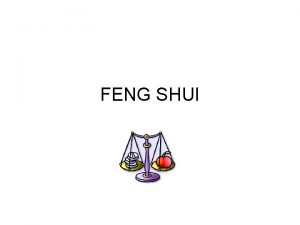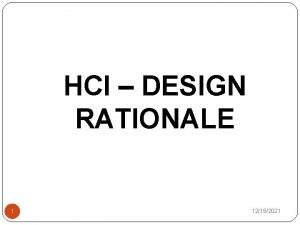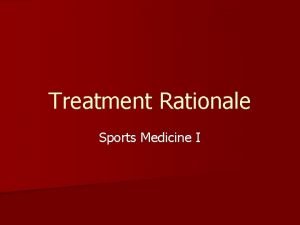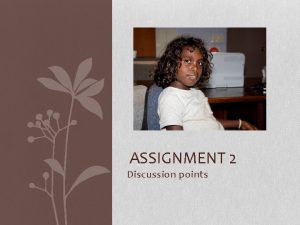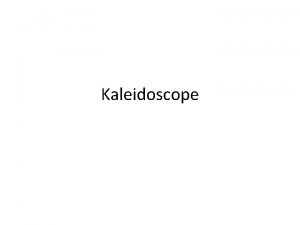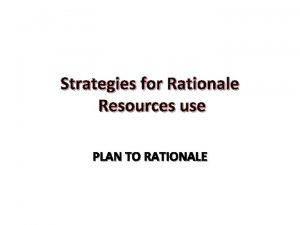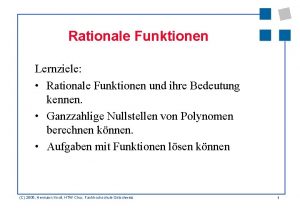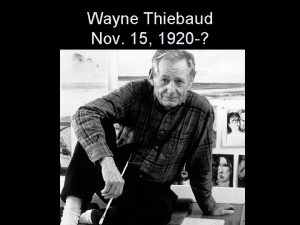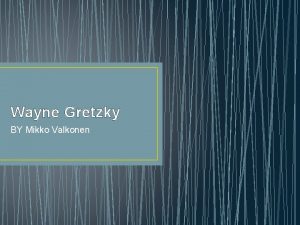TRANSPORT 2 Rationale Study Design Wayne Feng MD






















- Slides: 22

TRANSPORT 2 Rationale & Study Design Wayne Feng MD MS FANA FAHA Professor of Neurology Department of Neurology Medical University of South Carolina

Brain Stimulation Invasive Epidural Stimulation Deep brain stimulation Vagus nerve stimulation Non-invasive Transcranial Direct Current stimulation Transcranial alternating current stimulation Transcranial Magnetic Stimulation Transcranial pulsed ultrasound 2

Interhemispheric Inhibition & Modality of Brain Stimulation Schlaug, Expert review Medical Device, 2008 Feng, t. DCS in stroke recovery, 2010

t. DCS Investigation in Stroke Motor Recovery • t. DCS has some advantages due to his portability and ease of use. • Several small sample-size proofconcept studies suggest t. DCS, along with a rehabilitation therapy, can modulate brain activity and induce behavioral changes in stroke patients • Hurdles and opportunities co-exist for t. DCS in post-stroke motor recovery Zheng, stroke vascular neurology, 2017, feng PMR 2018 4

Dosage Peripheral Rehab Therapy Montage Blinding Patient selection Outcome measure(s) 5

Dose of Brain Stimulation Emerges as an Important Modulator of the Effect

Phase I Study of Safety and Tolerability Stopping Rules based on adverse events – 2 nd degree scalp burn; seizure; new brain lesions; or discontinuation do to Aes. Dose escalation: 1 m. A> 2. 5 m. A> 3. 0 m. A> 3. 5 m. A> 4. 0 m. A No dose limiting ‘toxicities’ that prevented escalation – 18 subjects enrolled – Treated up to 4. 0 m. A (3 x / dose) Tolerability Issues – ≤ 2 subjects observed skin redness – Common across dose arms Funded by NIH: P 20 GM 109040 (FENG) “The study results of this study are important, because they deliver first evidence about the safety profile and tolerability of t. DCS intensity relevantly higher than that used thus far in most clinical trials. Studies of this type are required to extend the parameter space for optimized clinical studies. ”

Innovation project funded by NM 4 R (P 2 CHD 086844) 8

Selection of Rehabilitation Therapy Mean difference = ( t. DCS + RT) – (sham stimulation + RT) Key Features of CIMT Effective Standardized Quantifiable Available 9

Bihemispheric Montage is Better 10

Timing of Intervention Acute phase Challenging medical issues Lack of validated patient selection tool Robust natural stroke recovery Chronic phase Stable deficit Easy to detect treatment effect Few confounders Odds of success is a little higher We choose the subacute phase: 1 -6 months from the stroke

Blinding & Randomization • Automation process • Centrally controlled randomization process • Participant, therapist, PI and t. DCS technician are all blinded. • Therapist is not allowed to do t. DCS and outcome assessment to minimize bias 12

Choices of Outcomes • Primary Outcome – Fugl-Meyer Upper Extremity scale: Motor Impairment • Secondary Outcomes – Wolf Motor Function Test: Motor Function – Stroke Impact Scale (Hand Subscale): Quality of Life – Secondary outcomes should have the same trend or consistent with primary outcomes • Good psychometric property: reliability, validity and responsiveness 13

TRANSPORT 2 Study Design To determine whethere is an initial overall treatment effect (FM-UE) among 3 dosing groups: - sham + m. CIMT - 2 m. A + m. CIMT - 4 m. A + m. CIMT Efficacy (FM-UE change) is measured at day 15 after the initiation of the 10 -day intervention. – Both Intent-to-treat and per protocol analysis. 14

Sample Size Calculation A change of 4. 25 -7. 25 points on the FM-UE scale is considered to be a meaningful clinically important difference (MCID). This study is powered under the assumption that m. CIMT alone, will at least achieve this intervention effect (4. 5) and furthermore intervention with either 2 m. A or 4 m. A t. DCS will further increase the change in FM-UE scale from the baseline by 4. 5 points (i. e. , a minimum intervention effect of 9. 0). Based on the meta-analysis of previous trials assessing t. DCS in stroke patients, a conservative estimate of the intervention variability is defined as SD = 7. With a sample size of 31 subjects per group, a two-sided type I error rate of 10%, and standard deviation of 7, if the true pattern of mean changes is 4. 5, 9. 0, and 9. 0 for the sham, 2 m. A, and 4 m. A groups respectively, we would have 83% power to reject the null hypothesis. Lost-of-follow up rates is controlled <=15% As a result, the final estimated sample size is 43 per group (129 in total) .

Secondary Aims To confirm that the proposed intervention is safe, tolerable, and feasible to administer in a multi-site trial setting Endpoints – Safety: Rate of Adverse Events – Tolerability: Visual Analog Scale – Feasibility: Treatment Completion Rate

Exploratory Aims To examine whether w. CST-LL (structural assessment of integrity of descending motor tract) or MEPs (functional assessment of integrity of descending motor tract) or combination of both are correlated with changes in FM-UE scale, and evaluate the utility of these measures as biomarkers for subject selection criteria in the future confirmatory Phase III study To examine whether functional or structural changes in motor tracts correlates with changes in impairment and functional motor activity induced by the intervention.

Eligibility Inclusion and exclusion will be presented by TRANSPORT 2 Co-PI Dr. Gottfried Schlaug

Adverse Event Reporting Not Under IDE Determination and Classification based on NINDS Common Data Elements During the Intervention Period – Adverse Events – Serious Adverse Events 90 Day Follow-Up Period – Serious Adverse Events – Clinically Related (Possibly or Definitely per investigator assessment) adverse events

Go or No-go 20

• Acute treatment: • DEFUSE 3 • IDEF* • MISTIE 3* • MOST • Prevention • CREST 2* • CREST-H* • ARCADIA • SLEEPSMART • SATURN • Recovery: • TELEREHAB* • TRANSPORT 2 • IACQUIRE TRANSPROT 2 is the FIRST stroke recovery study concept originated in the Stroke Trial Network

Questions? feng@musc. edu 22
 Wayne feng
Wayne feng Theoretical framework
Theoretical framework Methodological triangulation
Methodological triangulation What are the parts of a research proposal
What are the parts of a research proposal Norman's seven principles
Norman's seven principles Design concept rationale
Design concept rationale Uniport symport antiport
Uniport symport antiport Primary vs secondary active transport
Primary vs secondary active transport Now answer the questions
Now answer the questions Active vs passive transport venn diagram
Active vs passive transport venn diagram Unlike passive transport, active transport requires *
Unlike passive transport, active transport requires * Primary active transport vs secondary active transport
Primary active transport vs secondary active transport Bioflix activity membrane transport active transport
Bioflix activity membrane transport active transport Active transport image
Active transport image Bioflix activity membrane transport diffusion
Bioflix activity membrane transport diffusion Feng doolittle algorithm
Feng doolittle algorithm Feng doolittle algorithm
Feng doolittle algorithm Feng guo symmetry
Feng guo symmetry Kaveh razavi
Kaveh razavi Viento y agua 4 pilares
Viento y agua 4 pilares Su squares
Su squares Saharsa college of engineering
Saharsa college of engineering Feng yuan microsoft
Feng yuan microsoft
